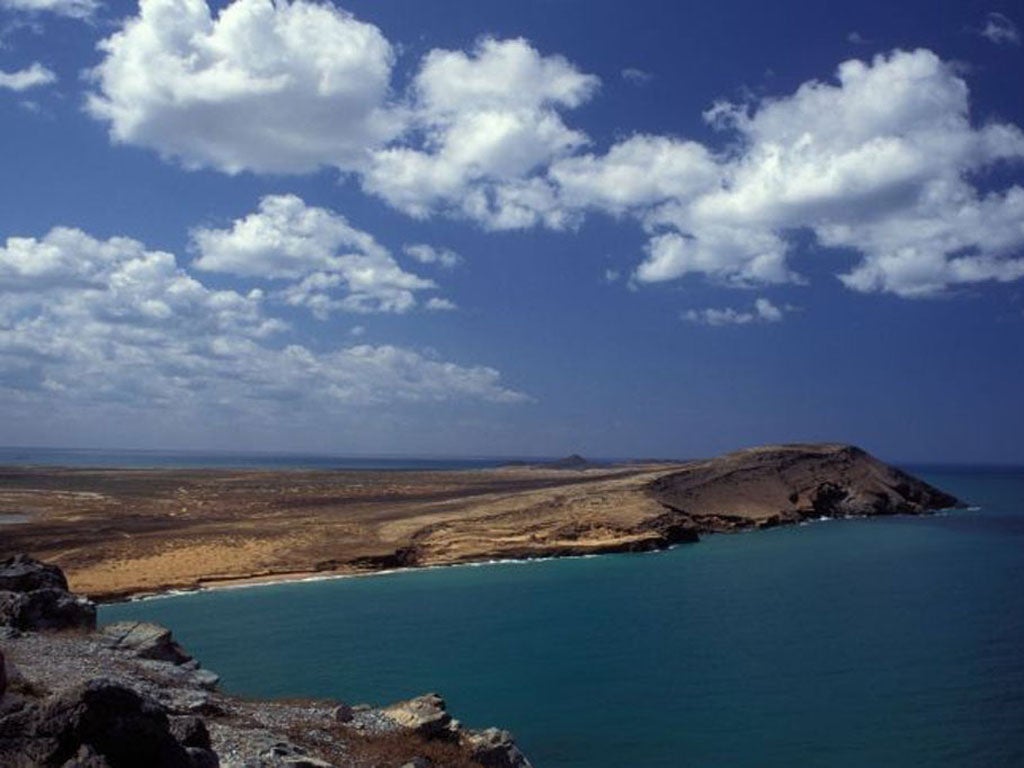Trail of the unexpected: Colombia's secret shore
Colombia's La Guajira Peninsula is a world apart, says Anna Maria Espsäter

"You should go to La Guajira," my friend in Cartagena had told me, all smiles. He'd made it sound so exotic, unspoilt and beautiful. Still, I couldn't help but curse him and his smiles as my bottom took another battering in the 4x4, along the non-existent road to this northernmost corner of South America. What could possibly be worth such a long, arduous journey?
La Guajira Peninsula lies in Colombia's far north-east, bordering Venezuela. It feels like a world of its own – and in many ways it is, retaining a semi-autonomous status. The indigenous Wayúu, an Amerindian people, are the main ethnic group. They hold dual Colombian and Venezuelan citizenship, freely crossing the border, as their ancestral territory straddles both countries.
As is natural in any frontier zone, smuggling used to be widespread – and with it, violent crime. Less than a decade ago, parts of the peninsula were too dangerous to visit. But a previous Colombian president, Alvaro Uribe, helped disarm the population during his 2003-06 demobilisation campaign. He encouraged people to find alternative sources of income, including tourism.
I set out with a group of intrepid travellers from Riohacha – the charming, sleepy-looking capital of La Guajira. The driver raced down the road like a man possessed; later it dawned on me that he was simply appreciating what may be the best bit of asphalt on the whole peninsula.
The road soon came to an abrupt end and we pushed on along a dirt track. After bouncing to the local vallenato music for several hours, we reached Cabo de la Vela (Candle Cape), on the west coast. The cape has a beautiful beach and is La Guajira's tourism hot spot. Almost every Wayúu family here runs a hostel, yet it doesn't feel too touristy.
We arrived after dark and were immediately assigned beds. Sadly there weren't enough to go around, so a few of us opted for the brightly coloured chinchorros – large "wrap-around hammocks" – hanging outside. It turned out to be a cold, itchy, uncomfortable night, but was still worth it for the spectacular blanket of stars twinkling high above me.
Cabo de la Vela is a good halfway point on the peninsula. After spending a night there, enjoying a brief morning tour of the scenic lookouts by the sea, it was time for the "real" adventure. While most tours go no further than Cabo de la Vela, ours was taking us right up to the very northernmost tip of the South American mainland: Punta Gallinas.
It was January and the rainy season had recently ended, leaving the dirt track impassable. Instead, we undertook the last part of the journey in a small boat. After three hours we finally arrived at the top end of South America, and the middle of nowhere: a beautiful, ghostly quiet and windswept wilderness.
We were met by our guide, Francisco. He's the man who'd dared to start running tours to Punta Gallinas despite its location.
"I've worked with the Wayúu and community tourism for over a decade now," he said as we walked up to Luz Mila, the only hostel and restaurant for miles – in fact the only buildings in sight. It is run by one of the 50 families he works with. Many of them run hostels, restaurants or benefit from tourism.
The next couple of days were spent roaming in nature, starting with Taroa Sands – enormous dunes running down to the Caribbean. It's the landscape that gives the area its touch of magic. There are sweeping vistas across vast dunes near the crashing ocean, but no habitation as far as the eye can see.
I walked along the mudflats and felt a long way from civilisation. Here there are no mobiles or televisions. Instead, evenings were spent listening to tales from the local Wayúu, many of whom had worked as sailors, or smugglers.
I asked if they missed the adventure. "No," said one man, called Quique. "I prefer to make a decent living without having to leave my family, or break the law."
Colombia facts
Population: 45,000,000|
Capital: Bogotá
Area: 55 times the size of Wales
Year of independence: 1810
Opening lines of national anthem: Cesó la horrible noche, la libertad sublime derrama. (The horrible night has ceased, sublime freedom shines)
Travel essentials: Colombia
Getting there
* The closest airport to La Guajira is Maracaibo, across the Venezuelan border. On the Colombian side, Santa Marta is closest. Both involve at least two changes of plane from the UK. Cartagena, accessible via Miami, is an easier prospect. Journey Latin America (020-3432 9274; journeylatinamerica.co.uk) can arrange flights and tours to La Guajira from the UK.
Getting around
* Independent travel around La Guajira is difficult as a result of the lack of public transport and good roads.
* Local agents Aventure Colombia (00 57 314 588 2378; aventurecolombia.com) based in Cartagena and Bogotá, and Kai Eco Travel (00 57 311 436 2830; kaiecotravel.com), run by Francisco Huérfano Paez, based in Riohacha, both run good tours.
More information
* Colombia Tourist Board: colombia.travel
* Latin American Travel Association: 020-8715 2913; lata.org.
Subscribe to Independent Premium to bookmark this article
Want to bookmark your favourite articles and stories to read or reference later? Start your Independent Premium subscription today.

Join our commenting forum
Join thought-provoking conversations, follow other Independent readers and see their replies